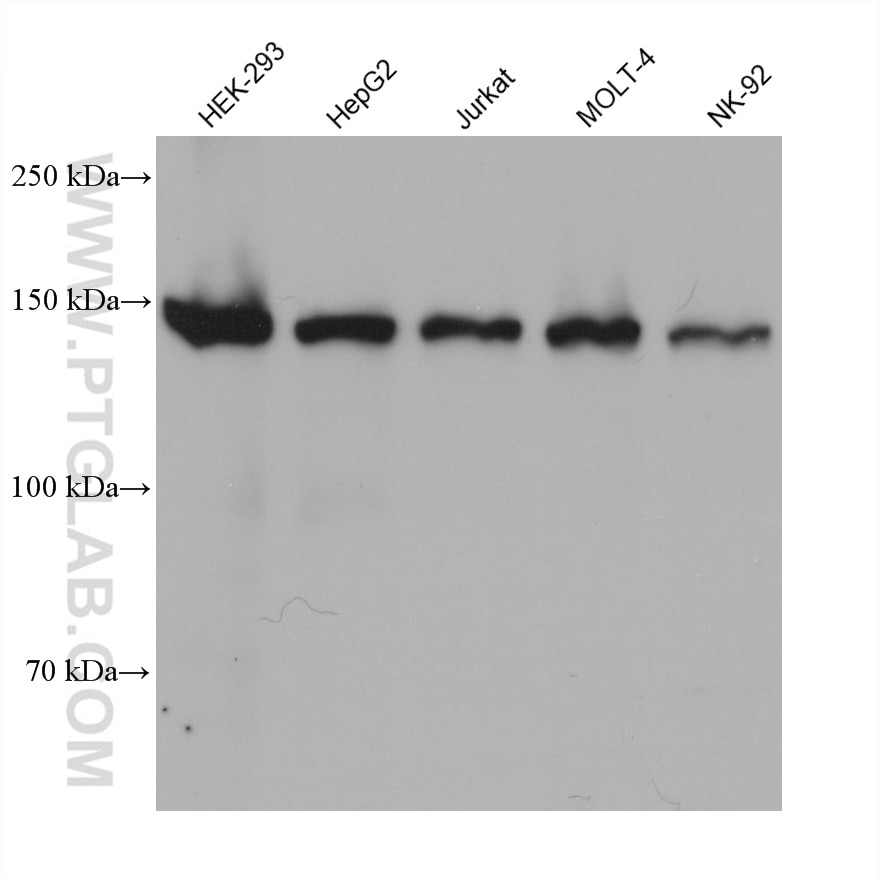SKIV2L Monoclonal antibody
SKIV2L Monoclonal Antibody for WB, ELISA
Host / Isotype
Mouse / IgG2a
Reactivity
Human
Applications
WB, ELISA
Conjugate
Unconjugated
CloneNo.
1A9G2
Cat no : 68547-1-Ig
Synonyms
Validation Data Gallery
Tested Applications
| Positive WB detected in | HEK-293 cells, HepG2 cells, Jurkat cells, MOLT-4 cells, NK-92 cells |
Recommended dilution
| Application | Dilution |
|---|---|
| Western Blot (WB) | WB : 1:2000-1:10000 |
| Sample-dependent, check data in validation data gallery | |
Product Information
68547-1-Ig targets SKIV2L in WB, ELISA applications and shows reactivity with Human samples.
| Tested Reactivity | Human |
| Host / Isotype | Mouse / IgG2a |
| Class | Monoclonal |
| Type | Antibody |
| Immunogen | SKIV2L fusion protein Ag33679 相同性解析による交差性が予測される生物種 |
| Full Name | superkiller viralicidic activity 2-like (S. cerevisiae) |
| Calculated molecular weight | 1246 aa, 138 kDa |
| Observed molecular weight | 138-145 kDa |
| GenBank accession number | BC015758 |
| Gene symbol | SKIV2L |
| Gene ID (NCBI) | 6499 |
| Conjugate | Unconjugated |
| Form | Liquid |
| Purification Method | Protein A purification |
| Storage Buffer | PBS with 0.02% sodium azide and 50% glycerol pH 7.3. |
| Storage Conditions | Store at -20°C. Stable for one year after shipment. Aliquoting is unnecessary for -20oC storage. |
Background Information
The Ski complex is a multiprotein complex required for exosome-mediated RNA surveillance, including the regulation of normal mRNA and the decay of nonfunctional mRNA. Component of the SKI complex which is thought to be involved in exosome-mediated RNA decay and associates with transcriptionally active genes in a manner dependent on PAF1 complex (PAF1C) [PMID:22444670]. SKIV2L , one component of the Ski complex, acts as an RNA helicase with a role in exosome recruitment or activation. It is involved in the degradation of RNAs by the exosome and may have a role in autophagy [PMID:11719186].
Protocols
| Product Specific Protocols | |
|---|---|
| WB protocol for SKIV2L antibody 68547-1-Ig | Download protocol |
| Standard Protocols | |
|---|---|
| Click here to view our Standard Protocols |


